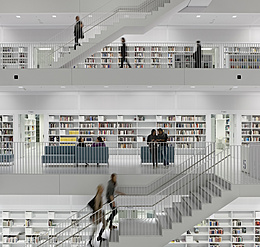
Directional light is emitted from point-shaped light sources and belongs to the classification direct lighting. One example from nature is the sun. In contrast to indirect light the light source is usually directed directly at the target surface to be illuminated. A common form of directional or focused light is accent lighting, e.g. via LED spotlights.














